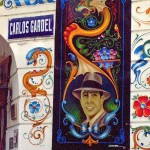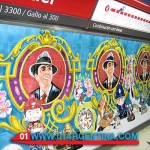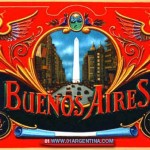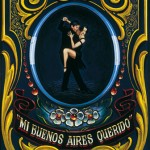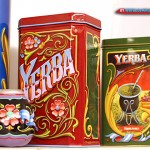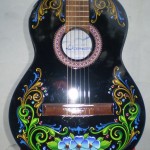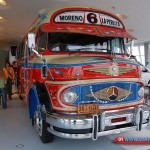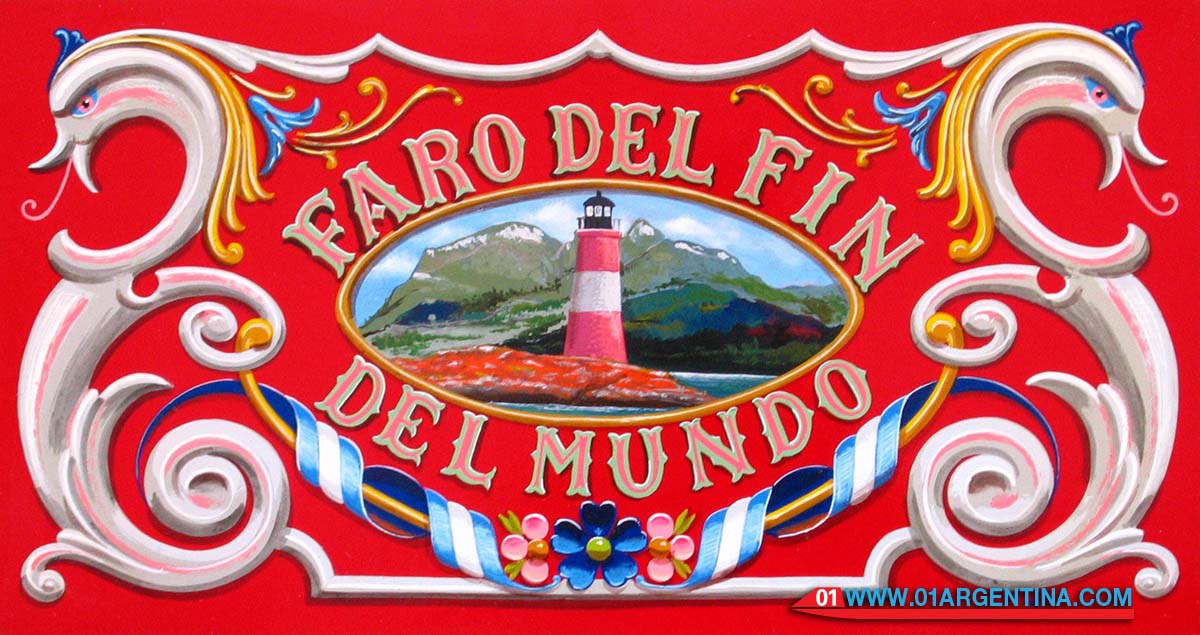 The thread is an artistic style of painting and drawing typically Buenos Aires (filleting Buenos Aires), characterized by lines become spirals, bright colors, the recurrent use of symmetry, three-dimensional effects through shadows and perspectives, and an overloaded use of the surface. When you take a city tour in Buenos Aires you can see this kind of art specially in neighboordhoods like La Boca or San Telmo. The repertoire of this art includes primarily decorative stylized leaves, animals, cornucopias, flowers, banners, and precious stones. In December 2015 it was declared intangible cultural heritage by the Intergovernmental Committee for the Safeguarding of the Unesco.
The thread is an artistic style of painting and drawing typically Buenos Aires (filleting Buenos Aires), characterized by lines become spirals, bright colors, the recurrent use of symmetry, three-dimensional effects through shadows and perspectives, and an overloaded use of the surface. When you take a city tour in Buenos Aires you can see this kind of art specially in neighboordhoods like La Boca or San Telmo. The repertoire of this art includes primarily decorative stylized leaves, animals, cornucopias, flowers, banners, and precious stones. In December 2015 it was declared intangible cultural heritage by the Intergovernmental Committee for the Safeguarding of the Unesco.
He born in Buenos Aires, Argentina, in the late nineteenth century as a simple ornament to embellish animal-drawn carts carrying food and eventually became its own pictorial art of this city, so much that went on to become in the iconographic symbol that best represents the city.
Usually included in the work, liners, sayings or humorous poetic, emotional or philosophical aphorisms, sometimes written in slang, and ornate lettering, usually Gothic or italics.
Many of its initiators were part of families of European immigrants, bringing some artistic elements were combined with Creole heritage, creating a typical Argentine style.
In 1970 the first exhibition of steak from the event which gave greater importance filleting, recognizing it as an art of promoting the city and its extension to all surfaces and objects are organized.
History
The start of the thread originates in the gray carts, pulled by horses, carrying food such as milk, fruit, vegetables or bread, in the late nineteenth century.
An anecdote told by the fileteador Enrique Brunetti, 4 that on Avenida Paseo Colon, who at that time was border between the city and its port, there was a body shop where they worked working in menial tasks two humble children of origin Italian that became prominent fileteadores: Vicente Brunetti (who would be the father of that Enrique) and Cecilio Pascarella, aged ten and thirteen respectively. One day the owner asked them to give a coat of paint to a car, which at that time were painted entirely gray. Perhaps mischief or just for experience, the fact is that the chanfles painted red truck, and liked this idea to its owner. Moreover, from that day other customers chanfles wanted to paint the colors of their cars, so other companies imitated the idea body. So, as manifested by Enrique, he would have begun the decorated carts; the next step was to color the boxes the same steaks using different thicknesses.
The next innovation was to include posters that included the owner’s name, address and specialty carrying. This work was initially carried out by French songwriters in Buenos Aires were dedicated to paint signs for businesses. As sometimes delay the inclusion of those letters was great, the shop owner Paseo Colon commissioned Brunetti and Pascarella, who had seen the task as did the French, who undertake them letters, highlighting the task Pascarella firuletes called to make posters and ornamented that would become characteristic of the thread.
Technique
The painter who decorated the car was called fileteador, for work performed with long hair brushes or brushes for filleting. This is a word derived from the Latin filum, meaning thread or edge of a molding, art referring to a thin line that serves as ornament.
Since this is a task that was made at the end of the carriage arrangement and immediately before collecting payment from the customer, who was eager to regain its tool, the thread should be undertaken expeditiously.



